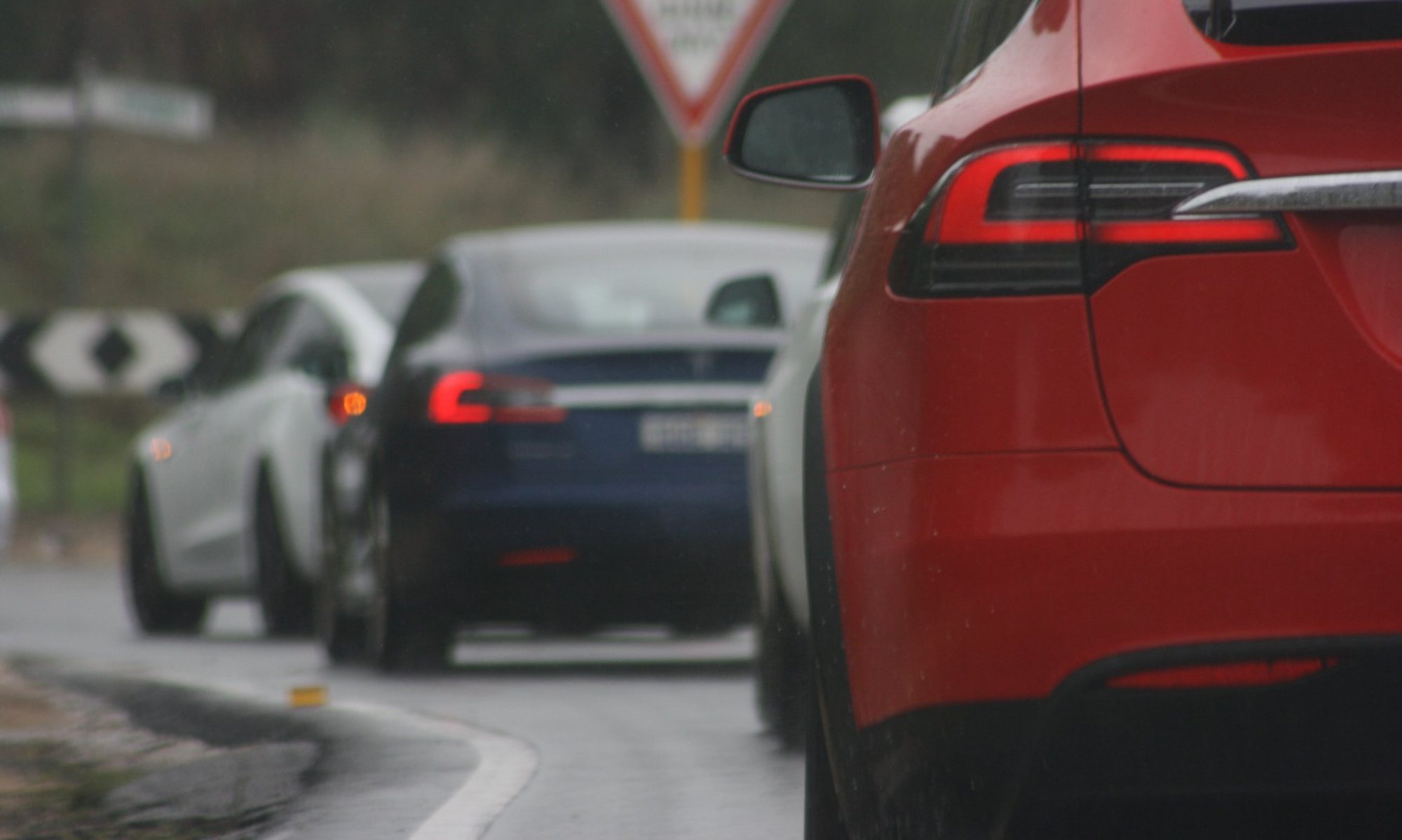Charging your Tesla is basically as simple as plugging in where there is electricity
– which is just about everywhere.
Of course, electricity comes from lots of different types of socket – from a normal domestic power point, to high-speed dedicated chargers.
While there’s basic information below, if you want the lots of technical information, you can delve deeper here.
We also had a live seminar which covers this topic here:
PART 1 – HOW FAST CAN I CHARGE:
How fast you charge depends essentially on 3 factors:
1) Your current state of charge – When you charge, your battery will charge faster when it has less stored charge and slower as it gets full. This is more noticeable at Superchargers and Rapid chargers, but as a rule, regardless of how fast you charge, once you get towards 100%, your rate of charge will slow dramatically.
For this reason, it’s often better to charge up to 80 or 90% and keep driving unless you really need that extra range – also, with the exception of China-made SR+ cars which have a different battery-type, your battery will last much longer if you don’t charge to 100% all the time anyway.
2) AC – If you’re charging on AC, which is most places, especially those where you bring your own plug, your charging rate is limited by:
- The size of the onboard charger in your car – this sets a maximum rate-of-charge. Most Teslas have a maximum AC rate of 11kW. 17kw is available on newer S and X. On “classic” Model S, this can be as much as to 22kW.
and also
- What you’re plugged into – depending on what you’re plugged into, you may charge as slow as 2kW from a domestic socket up to the full rate of your car’s onboard charger on 3-phase chargers and sockets – we’ll cover this in more detail below.
3) DC – If you’re charging on DC, which means you’re using a Supercharger, a CCS-Combo2 (CCS2) or a CHAdeMO charger, the rate is governed by the charger. Superchargers and CCS2 max out at about 150-250kW and CHAdeMO adapters at about 50kW.
What cables do you need?
Your Australian Tesla (unless you have a first-generation roadster) has a charge port with a “Type 2” connector which we share with much of the world – sometimes called a “Mennekes” connector. This is not the same connector as used in America (or some other markets). Model 3 and Y also have a CCS Combo 2 extension to this socket:
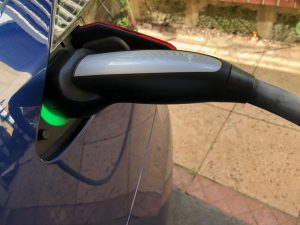
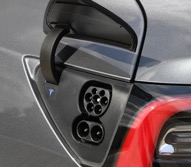
Depending on your car, your charge port will have either a motorised flap or a manual one, and a single status light, or a set of smaller lights.
Tesla-supplied cables and Superchargers have a button for both opening the flap, and unlocking the charger before removal. Third-party cables don’t have this button, but you can just push on the flap to open the motorised ones once you’ve unlocked the car (or you can open it from the charging screen in the car).
This single connector is able to connect to;
• single or 3-phase AC from standard sockets or various types of dedicated charger,
• the Eaton v2 Supercharger,
• v3 Superchargers and CCS2 connectors (natively for Model 3/Y, or via an adapter for S/X)
• Model S and X can connect to a CHAdeMO DC charger with an adapter.
We’ll cover the differences later.
If you only plan to charge from Superchargers, you don’t need to buy anything. If you want to charge at home, from household plugs, you will need a Mobile Charger or EVSE described below. If you plan to travel further afield, or would like to be able to use the full range of charging infrastructure, you may wish to buy some extras.
TOCWA has a set of loan cables if you are planning a trip and want the peace of mind without spending any extra money, or you’d just like to try them out.
The Tesla Mobile Connector (UMC)
This cable is actually a charge-point that you can carry around. It comes with a standard 10A and 15A, 240V plug in Australia, and this will give you 2kW or 3kW – it’s great for overnight stays where there is no other infrastructure, and will roughly give you 1/3 of your battery back overnight. You can purchase one from Tesla for $550
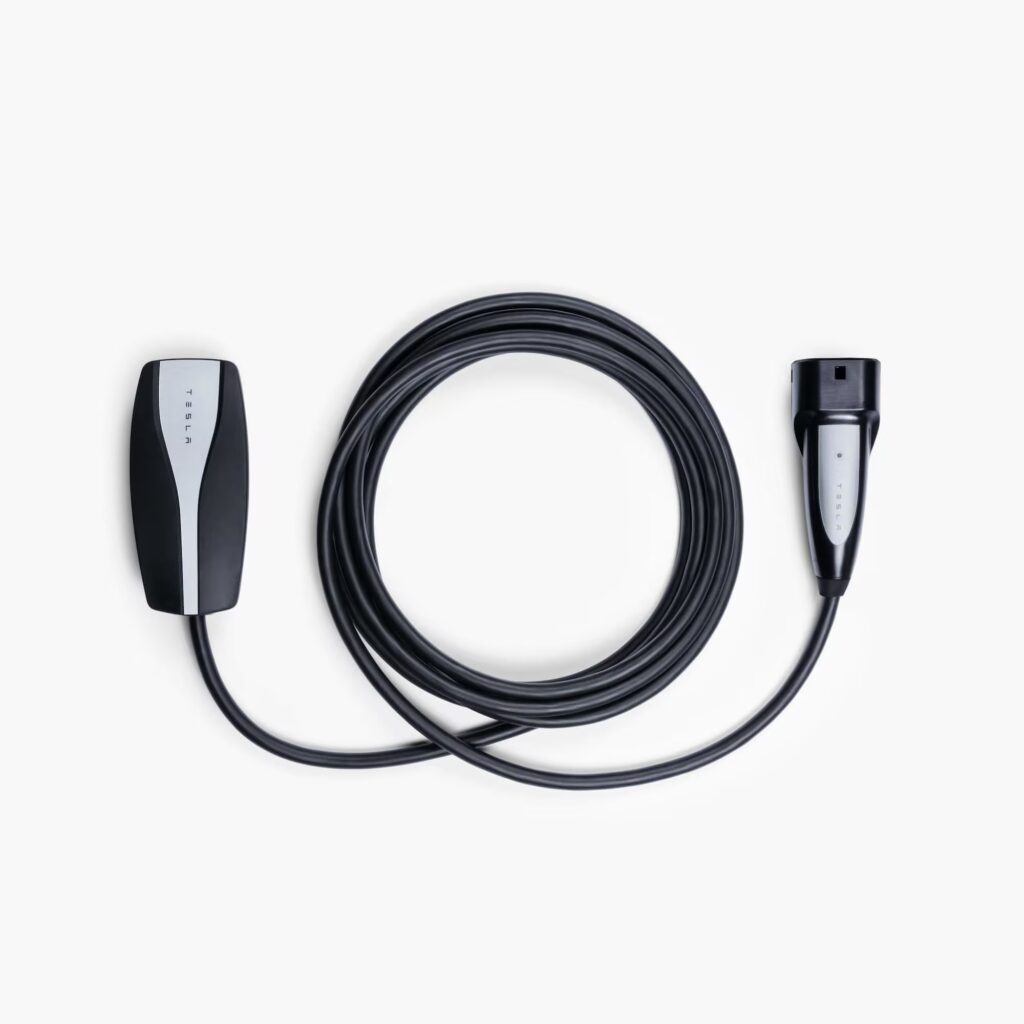
The Mobile Connector can be fitted with different ends, or “tails”. As mentioned above, the Mobile Connector comes with both a 10A (2kW) and 15A (3kW) tail. Both of these can be supplemented with additional tails that allow you to connect to Australian 3-phase plugs allowing for up to 7kW (32A/single phase).
The most likely plug you’ll find for this in Australia is a 32A 3-phase, from which you can pull from one of the phases with a special tail which is made from a 32A official Tesla tail from another market, with the plug replaced with an Australian plug.
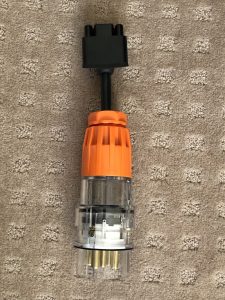
You can also purchase third-party units that can do more than 11kW – the club has loan 22kW units that you can borrow, as well as a supply of Kohns 22kW EVSEs that members can buy for $750.
Telsla can also supply a Wall Connector
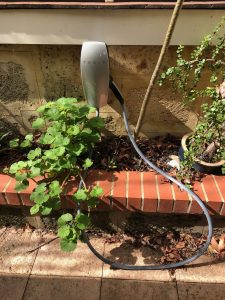
The Wall Connector is designed to be permanently installed in your house or workplace. It’s installed by an electrician and depending on your supply, it can deliver up to the maximum rate that your onboard charger can take. Often, this is limited to around 7-11kW by building wiring, but it is still the perfect charger for using when you’re parked. This is by far the most common way you’re likely to charge. The one pictured above is installed in an outdoor carport, and they are happy in just about any environment. Tesla also give these chargers to “destinations” such as hotels and restaurants and these show up on your car’s charging map automatically. They are available for purchase for $800 from Tesla.
There are four other connectors you will come across:
Type-2
Many chargers, such as the Tesla Wall Connector have a tethered cable with a Type-2 connector that you can use without needing anything else, but in many locations there are chargers with a Type-2 socket.
Examples are;
• the Schneider-type chargers at the sites like Pemberton, at Home Base, Subiaco (pictured below) and in the Forrest Centre car-park,
• the EO-style connectors at Fremantle and Floreat and Scarborough beaches, and
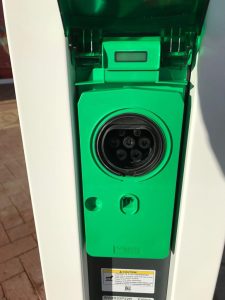
At these locations, you need a Type-2 to Type-2 cable with you:

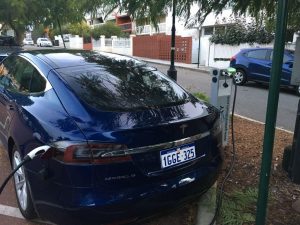
TOCWA has Type-2 to Type-2 cables that members can borrow. You can also buy one from Tesla for $310.
CCS-Combo-2 (CCS2)
CCS2 is an extension of the standard Type-2 socket that allows from DC Charging. Since 2021, all Tesla Superchargers in Australia only have this connector.
As noted above, Model 3 and Y have this connector as standard, and can therefore use these chargers without adapters:

For Model S and X owners, if your car was built after May 2019, you can use an adapter supplied by Tesla to connect a CCS2 charger to your car’s socket:
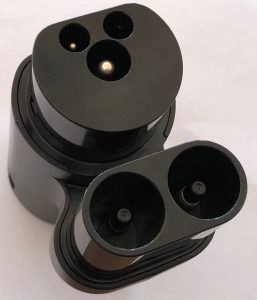
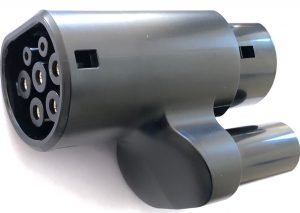
Cars built before May 2019 can have this option “retro-fitted” to their internal charger for $480.
CHAdeMO
CHAdeMO is a clever French/Japanese portmanteau that means both “Charge de move” and “(o)cha de mo ikaga desuka” (“do you want some tea?”). it is also an international standard for DC charging of electric vehicles. Tesla sell an adapter which works on Model S and X, but not on 3 or a Y:
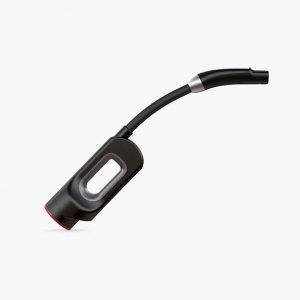
This adapter allows the bulky CHAdeMO connector to interface with the Tesla connector and supports high-speed charging at up to 50kW from dedicated chargers, like the AmpCharge Chargers.
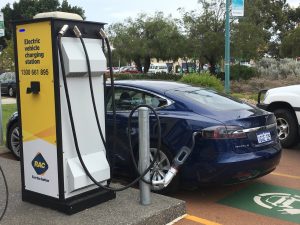
TOCWA has a number of Tesla-CHAdeMO adapters that members can borrow.
Type-1
In some locations, such as some City of Perth car parks like the Exhibition Centre and Pier St, you will also find older “Type-1” connectors. These are electrically compatible with “Type-2”, but they only supply single-phase. You can get an adapter:

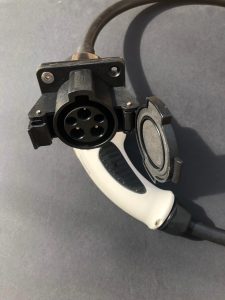
The adapter takes the Type-1 tethered plug and adapts it to the Type-2 chargeport.
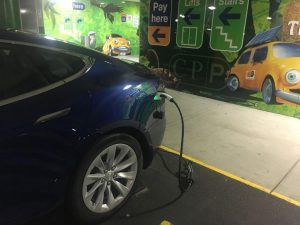
So – What cables do you need?
It really depends on your use. For many owners, you won’t need any additional cables at all. However, we find for most, a Tesla Mobile Connector (or similar EVSE) will be all you ever need, especially as Tesla add more Superchargers. With a Mobile Connector, you can charge:
• at home or any location with a household power socket
and without any cables at all, you can charge;
• at the Eaton v2 Supercharger
• at v3 Superchargers and third-party CCS2 chargers (for 3/Y, and late/retrofitted S/X)
• at chargers with tethered Type-2 connectors (such as Tesla’s destination chargers)
You may well want to get a Type-2 to Type-2 cable, as untethered Type-2 connectors are becoming more common for public charging.
There are very few sites that still have Type-1 connectors with less by the day – many are being replaced with Type-2 – and they are often quite slow, so unless you routinely park at the convention centre or Pier St, for example, it’s unlikely you’ll need a Type-1 to Type-2.
If you you own a Model S or X and want to be able to charge at high-speed from third-party rapid chargers, you may want to get either a CCS2-adapter (and retro-fit if needed), or a CHAdeMO adapter, or you can choose to borrow club adapters when you go on trips.
If you plan to travel longer distances further out of town, then a 3-phase capable EVSE is worth investing in – 3-phase sockets are found in many more remote locations – again, you are welcome to borrow TOCWA’s EVSEs when you go on trips.
Please feel free to ask questions via email for more information. If you want more technical detail, go here.
